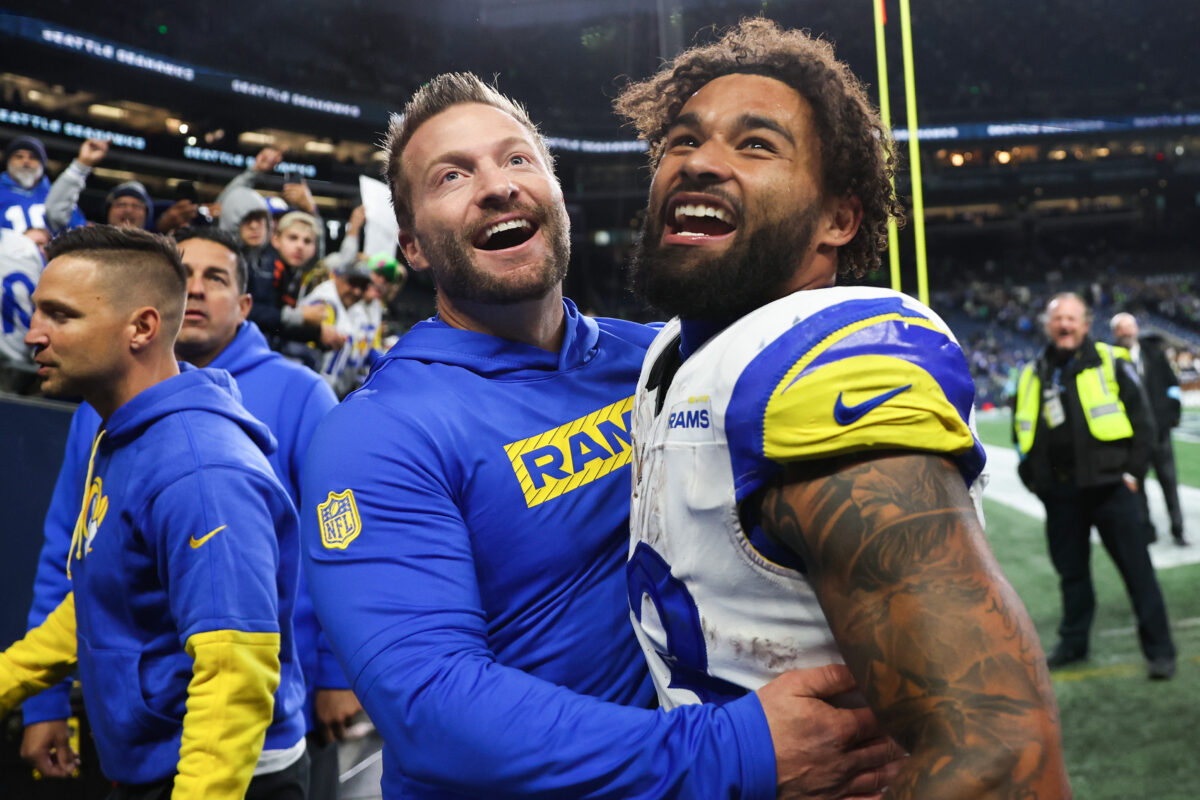The Rams’ offense has been at the forefront of innovation since Sean McVay became head coach in 2017. Modern passing concepts, different formations, and the “Cooper Kupp” role have defined McVay’s system but it’s time for some improvements.
McVay’s offense was innovative because it was ahead of the curve and that curve was a pass-first NFL. In 2017, teams were airing the ball out, but not in the way they are now. The NFL had legitimate gunslingers launching bombs on a regular basis. It was a vertical attack that McVay exploited with a horizontal passing attack in contrast. As defenses prepared for vertical attacks, the horizontal attack was a counter concept that soon infected the league.
Many McVay disciples like Kevin O’Connell, Zac Taylor, Matt LaFleur, and Raheem Morris ran similar offenses after getting hired to head coaching roles. The Chiefs also modernized their attack with similar philosophies to McVay, leading to a combined four Super Bowl wins between the Rams and Chiefs in the last five years.
As a result, McVay’s offense isn’t as forward-thinking as it once was. The league always catches up and oftentimes, in order to go forward, one must go backwards.
The fullback was a staple in every offense up until the end of the 2000s. Players like Mike Alstott, Lorenzo Neal and Mike Tolbert made up the then-“modern” fullback – a massive, muscled-out monster with a short neck and a propensity to put people on their behinds. As the NFL adopted a stronger emphasis on the pass, players like that were no longer needed and the position has been on life alert ever since.
That was until Kyle Juszczyk came into the NFL. A slender, physically cut player with length, he was the opposite of what a fullback was supposed to look like and for good reason. The modern fullback must accommodate the needs of a modern offense and Juszczyk’s body type allowed for that.
For Baltimore and now San Francisco, Juszczyk serves as a fullback, blocking halfback in shotgun formations, as a tight end, receiver and in rare occasions, he’s used as an H-back in odd formations. The modern fullback is a Swiss Army knife of talents that can be flexible.
That’s why players like Patrick Ricard, Hunter Luepke, Scott Matlock, Michael Burton and Alec Ingold have found work around the NFL. The Rams need a player like that. A fullback would complement the Rams’ rushing attack perfectly.
The fullback is effective in these times because linebackers are built differently. Gone are the downhill brawlers like Jessie Tuggle and now there are the Fred Warners of the world – he coverage guys that shed blockers. Well, a fullback provides the second hit that eliminates a player like Warner from making a play after he sheds an offensive lineman. A fullback is the player that will set the edge on a toss. Faster than an offensive lineman, a fullback can get to the point of attack sooner than any other blocker.
In the McVay offense, a fullback would not only open up holes for Kyren Williams but on passing downs, a fullback could serve as a more effective blocker than a true running back due to a difference in size and frame.
A fullback would also allow for better red zone plays as not only would the Rams be able to more effectively run the ball inside the 20, but fullbacks are the perfect targets for play action, something Matthew Stafford excels at.
The Rams need to incorporate a fullback into their offense. They’re gritty, they’re tough and they make the play that sets up the play to win a game. The key block, the FB dive on fourth-and-short to move the chains, the blocker that picks up the blitz. They are an essential part of football and the fullback is where the NFL is going. It’s time to get ahead of the curve once again.
